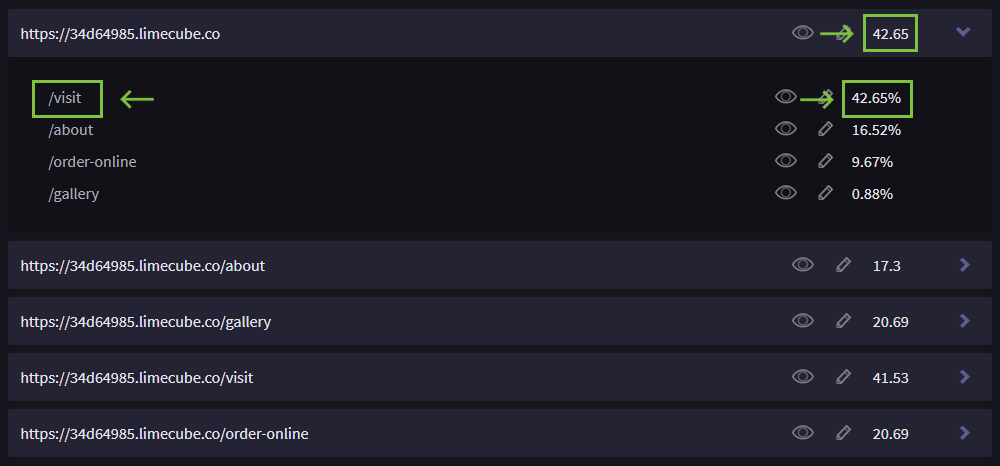Duplicate Content Checker
On this page:
The duplicate content checker is for checking for internal duplicate content within your site and highlight potential risks that have a negative effect on your sites SEO.
What is duplicate content, and why does it matter?
Duplicate content is content that appears in more than one location on the web, and even on your own website. While there are opposing views as to the degree of negative impact of duplicate content, one thing is clear, whether it will give you a Google penalty, or simply stop you achieving the rankings for your site you could otherwise achieve, it is under all circumstances something to avoid having.
How to check for duplicate content
The duplicate content checker scans the site to find any duplicate content. The results display the percentage of similarity between pages on your site ordered by the most similar first.
To use the Duplicate Content tool:
- Go to the SEO Manager on the top menu
- In the left panel, click on the Duplicate Content tab
- Click the 'Check for duplicate contents'
Watch this video below to see how the tool works:

Duplicate Content Results
Once the tool completes running, you'll see a list of pages in your site. What the results show:
- The page of the result, which can be clicked on to expand and see the % of duplicating against other pages within the site.
- The eye icon opens the page on the front end of your site
- The pen icon allows you to jump to that page in the page editor
- The number value is the highest % of duplicate content match on this page compared to other pages on the site
- The arrow is to expand results
Making sense of the results
It should be noted these results are a guide only to help speed up the process of finding content weaknesses in your site. Having a higher % of duplicate content still requires analysis of that page and taking a considered approach to how you deal with it. If you are unsure, it is best to consult with a professional SEO before taking any drastic action.
Each page in the expanded section shows a % value in the right column. This % value is the % match of duplication against the main page for this expanded section.

Causes of high duplicate content
Other than the obvious reuse of main content on pages that show a high % of duplicate content, there can also be:
- Pages with very little content (e.g. less than 200 words) - In this case, your page would show up as having high duplicate content because of the other elements on your page such as fixed boxes, top menu and footer. As these elements are shared across pages, this then makes your page appear as duplicate content.
- Pages that have all their content in an iFrame. This type of content is not recognized as part of your page.
What to do with duplicate content
It is usually important to take action to correct any negative effect the page could have on your site. There are typically 2 ways of dealing with duplicate content:
- Adding fresh unique content to the page to decrease the % of similarity with other pages
- Add noindex to the page. This should be done with caution, as by noindexing a page, you are telling Google not to show this page in results. By adding a noindex, while it will still show up as a result in the duplicate content tool, Google will no longer consider this page as duplicate content in your site.
Can't find the answer you are looking for?
Try using searching below: